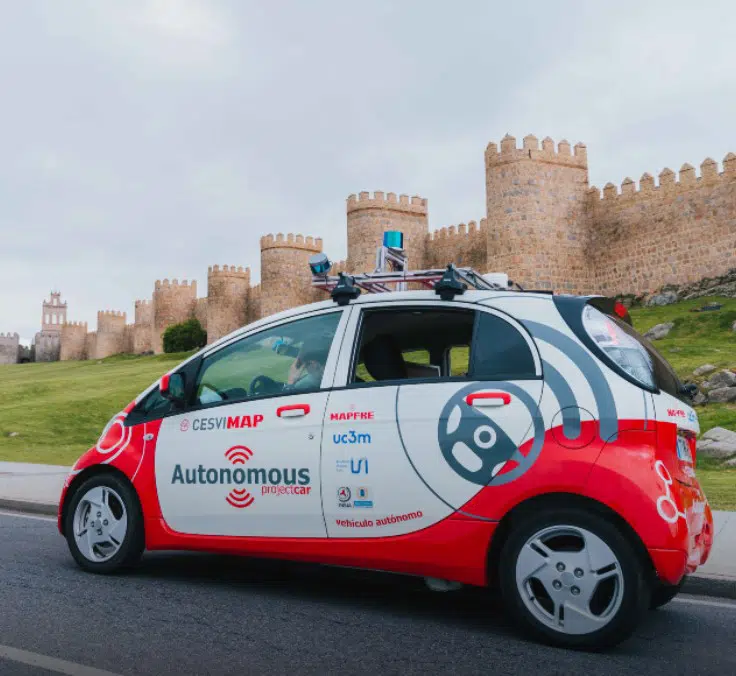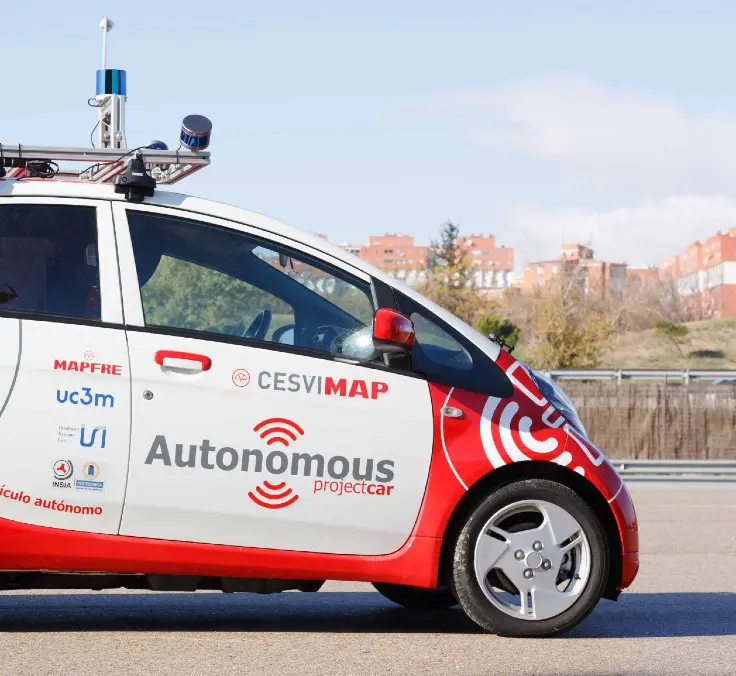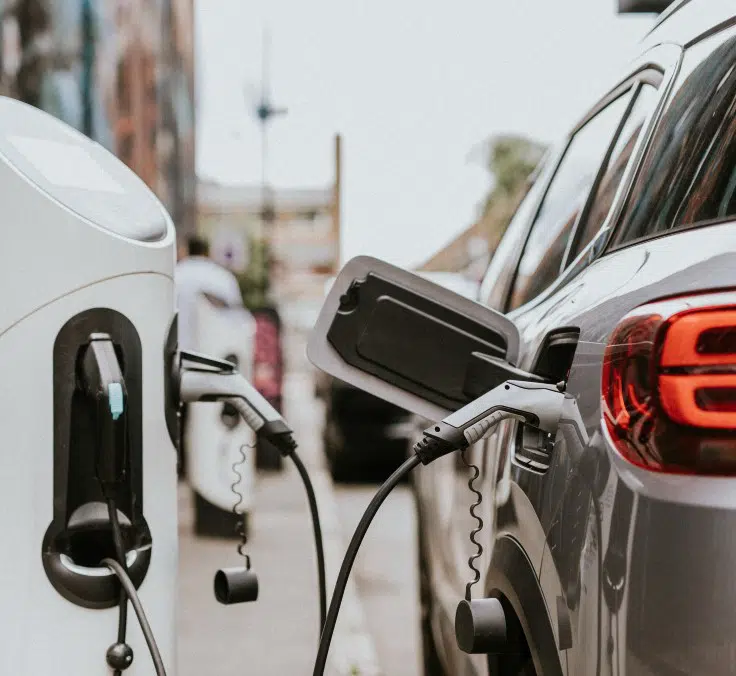INNOVATION| 09.06.2023
Autonomous vehicles: where does road safety stand in the race for total autonomy?
The reform of the Traffic Law in March 2022 incorporated references to autonomous cars for the first time, establishing their regulation as a state power. It is expected that by the end of 2023, new legislation will be in place and autonomous vehicles up to level 4 will be able to travel on Spanish roads. However, are we prepared when it comes to road safety?
Autonomous cars with no driver behind the wheel, in the purest sense of science fiction movies, have been on the horizon for years, but never actually become a reality. Or at least until recently.
This “dream” is no longer so far-fetched and is closer to becoming a reality than ever. Manufacturers are applying technological developments to make this tangible and democratized as soon as possible. However, there are still hurdles that must be overcome in this area, as well as in terms of regulation and road safety.
The programming of algorithms, one pitfall
The complexity of programming all the possible combinations of factors possible in real life when driving makes launching a 100% reliable control algorithm with current technology simply unfeasible.
We are gradually making progress, feeding databases with structured and unstructured data and consolidating an infinite number of different kinds of variables (weather, different types of people, colors, objects, etc.) that affect autonomous driving in systems. However, the ethics of models, biases, interpreting signals or data privacy remain some of the most important challenges.
What’s more, research on this subject consumes huge amounts of resources, both financial and in terms of equipment and time.
The regulation of up to level 4 autonomous cars to be implemented in 2023
The driving levels of autonomous cars are governed by the SAE J3016 standard, developed by the Society of Automotive Engineers (SAE). The standard establishes six levels of automation, from 0 to 5, depending on the degree of human intervention while driving: vehicle without autopilot (0); driving assistance (1); partial automation (2); conditional automation (3); high level of automation (4); total vehicle automation (5).
In Spain, the current General Traffic Regulations (Art. 18) states that the driver must pay permanent attention while driving. Furthermore, both this regulation and the Traffic Law indicate that “the driver must be in a position to control their vehicle at all times.” At present, drivers cannot remove their hands from the steering wheel.
The Law was reworded in March 2022 to include, for the first time, mentions of autonomous cars. Specifically, this includes several references to the term “automated vehicle,” setting out that the regulation of these vehicles is a state responsibility and that the owner of a system with these features must notify the Central Traffic Headquarters of its autonomous driving capabilities.
By the end of 2023, the standard is due to be reworded again, bearing in mind the use of autonomous cars up to level 4 in the country; such regulations are already in force in European countries such as Germany. This will entail a high degree of automation, in which the systems “are prepared to drive autonomously in the event of any unforeseen event,” without the need for human intervention. The person is no longer responsible for driving the car.
The importance of ensuring road safety
Regardless of what the legislation looks like by the end of this year (if ultimately, new regulations are passed and the conditions thereof or if changes in government will delay the draft), progress with autonomous driving must go hand in hand with road safety.
Whenever on the road, drivers come across different circumstances, such as pedestrian streets, reduced-speed lanes, highways, dual carriageways, roundabouts, etc. This is in addition to the usual (or unforeseen and accidental) environmental factors in terms of traffic signs, streetlights, curbs, potholes, double-parked vehicles, other people, etc. For driving to be effective and to travel from one point to another, autonomous cars must take all of this into account.
To this end, road safety is particularly relevant in two ways: for pedestrians, since it is necessary to guarantee at all times that the vehicle will not cause them any inconvenience and for the vehicle itself, since it is necessary to prepare the systems so that they integrate all environmental factors in real time and offer security to make up for the fact that there is no driver.
“Studying the effectiveness of safe driving assistance systems (ADAS) in depth and perfecting environmental perception technologies to map the route in real time are two essentials when it comes to guaranteeing road safety. The success and future of autonomous cars undoubtedly depends on this,” asserts José María Cancer, general manager of CESVIMAP, MAPFRE’s R&D center.
Research by CESVIMAP on autonomous cars
In cooperation with the Polytechnic University of Madrid, through INSIA, and the Carlos III University of Madrid, in its Intelligent Systems Laboratory, CESVIMAP has designed and tested an autonomous platform called ATLAS (Autonomous Testing Platform for Autonomous Research). It uses the platform to investigate the technology embedded in autonomous vehicles and the impact it can have in terms of road safety and insurance.
MAPFRE is the first insurance company to build an autonomous test platform to investigate this technology and the risks it poses. The project, on which the company has been working since 2018, has developed and tested aspects such as computer vision to perceive the environment, vehicle-to-everything communication capacity, human-machine interaction, etc., as well as location and simulation of the environment in digital recreations.
In 2022, a huge step forward was taken with research: the first prototype autonomous car successfully completed an urban journey inside the walls of the city of Ávila. It won second prize in the Dubai World Challenge for Self-Driving Transport
Furthermore, MAPFRE, through its CESVIMAP R&D laboratory, completes a numerical simulation of accidents under different scenarios on digital twins that are compared with real experience. Other vehicles are also analyzed, such as delivery robots that move completely autonomously on sidewalks. These robots, although they can move on their own as part of their level 4 autonomy, can be controlled remotely by a human operator for certain aspects related to road safety. One example of this would be crossing the street at a crosswalk.
Thanks to research like this, it is possible to focus on reducing accidents and the accident rate of autonomous cars. As well as on forecasting the associated costs in the insurance sector and, when the time comes, having car insurance that really corresponds to the needs of the new reality.
RELATED ARTICLES:




